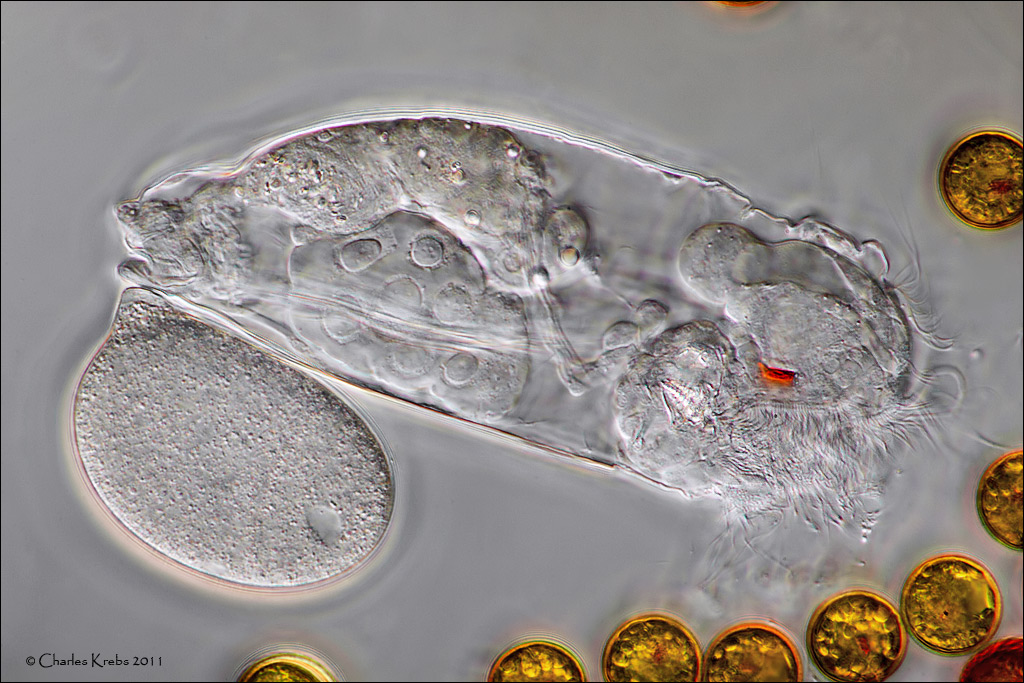I'm not sure of the "composition" of rotifer eyes. More basic protozoan eye-spots are groups of lipid globules of carotenoid pigments. They provide some orientation to existing light and (as is clearly seen in trachelomonas and dinoflagellates) allow the organism to move toward the light.
In a discussion of whether or not to use eye-spots for classification purposes, there is some interesting information in this excerpt:

There are a couple of older shots here that show rotifer eye-spots clearly:
http://www.photomacrography1.net/forum/ ... php?t=4804



